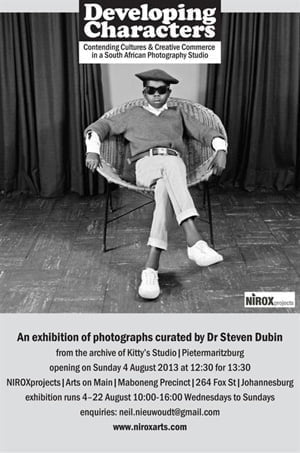Developing Characters
R50
For more than a decade, a Johannesburg garage held a marvellous secret: an archive of over 1,400 photographic negatives produced by Kitty’s Studio in Pietermaritzburg between 1972 and 1984. Poor and working-class patrons ”classified by the apartheid government as African, Indian and coloured” came there to be photographed by Singarum Jeevaruthnam Moodley (1922-1987), a.k.a. Kitty, and members of his family.
Out of stock
Description
For more than a decade, a Johannesburg garage held a marvellous secret: an archive of over 1,400 photographic negatives produced by Kitty’s Studio in Pietermaritzburg between 1972 and 1984. Poor and working-class patrons ”classified by the apartheid government as African, Indian and coloured” came there to be photographed by Singarum Jeevaruthnam Moodley (1922-1987), a.k.a. Kitty, and members of his family. A selection of 80 images from the archive will be shown publicly for the first time in the exhibition “Developing Characters: Contending Cultures & Creative Commerce in a South African Photography Studio”. Daringly constructing a broad range of identities and multiple forms of self-representation,the sitters appear to be both familiar and distant. Subjects range from traditionally attired individuals to hip characters. Some are clad in the garb of Zionists or sangoma as, kitted out in sporting attire, or wearing the uniforms of nursing sisters or municipal employees. They reveal longing, pride, affection, playfulness, conformity and defiance. This exhibition provides an unprecedented opportunity to glimpse into the lived and imagined lives experienced by those classified as “non-whites” and “whites” under apartheid that extend beyond the sensationalised media images of the time. To accompany the exhibition, the University of Johannesburg’s Research Centre, Visual Identities in Art and Design, will host a panel discussion at NIROXprojects on Thursday 8 August, 18:00 for 18:30. A panel of scholars will consider questions around the challenges and opportunities of examining South African vernacular photography, and the respective roles of aesthetic and sociological/historical/political perspectives in analysing and presenting this material.
Catalogue available at David Krut Bookstores

